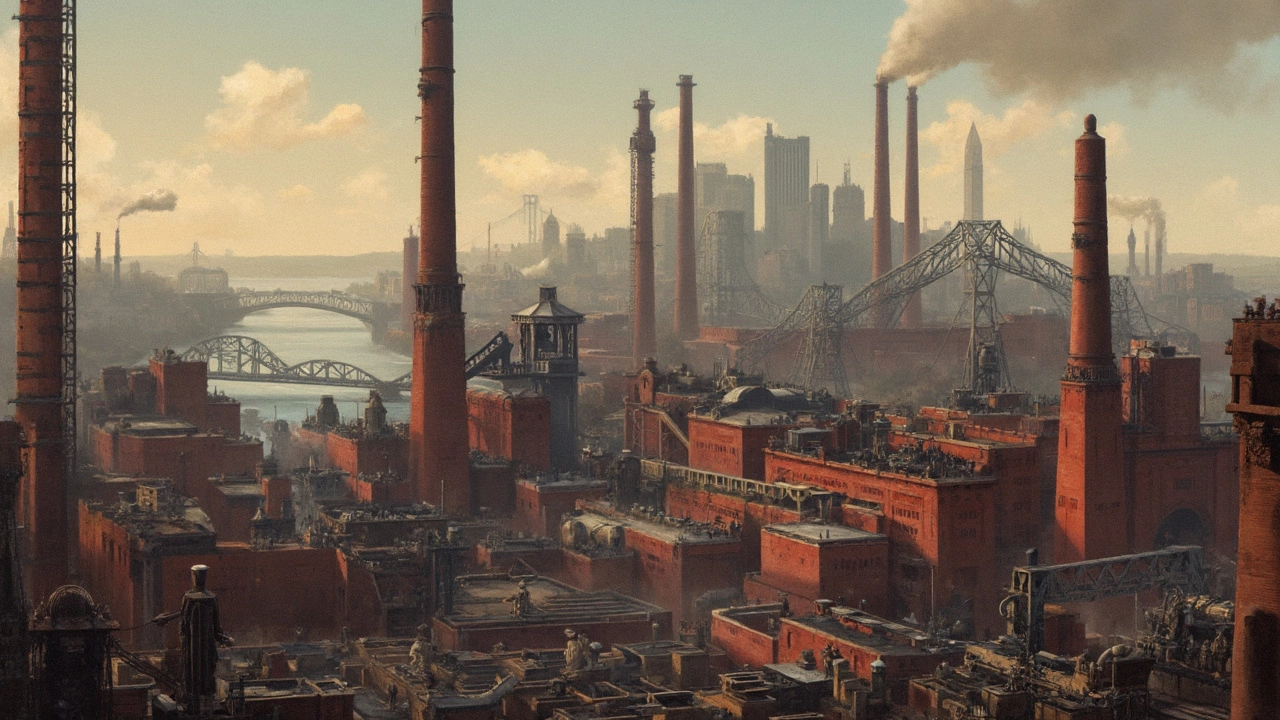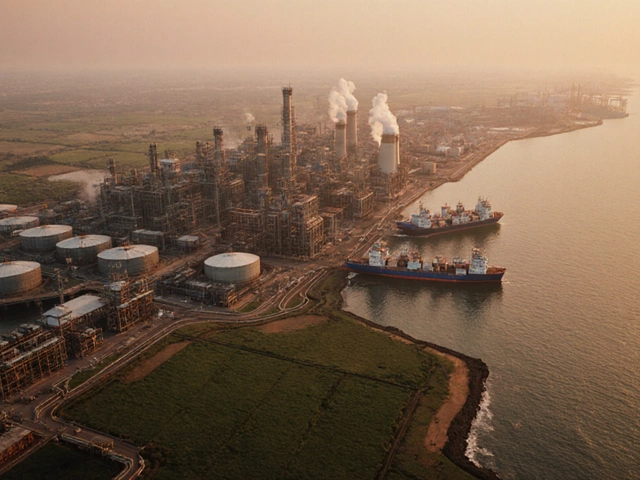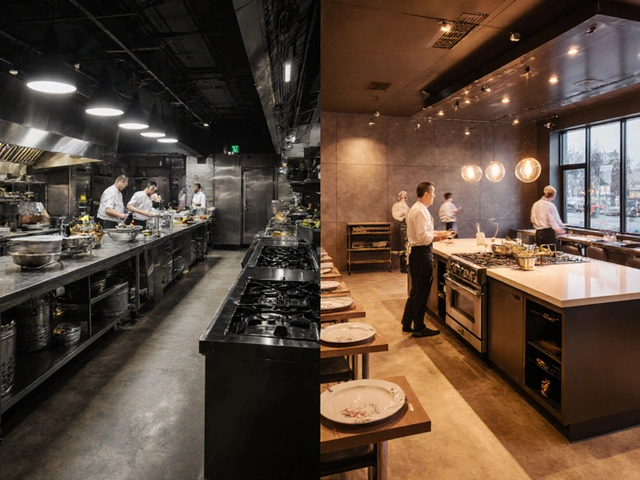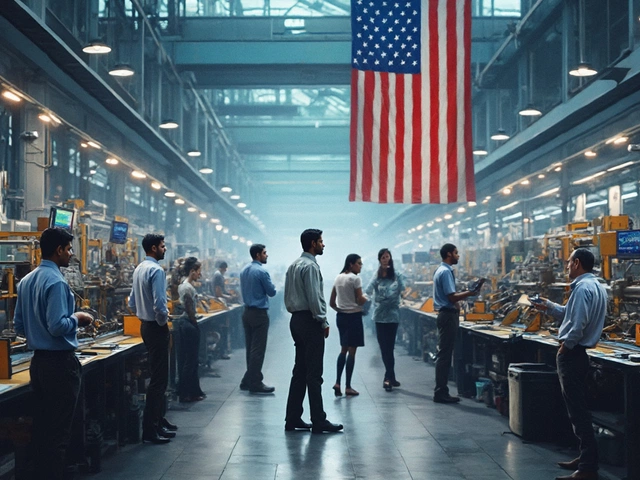Pittsburgh is often called the 'Steel City' for a reason. Its steel-making prowess once reached legendary status, but did it really produce more steel than Germany? That's a wild comparison, right?
Back in the late 19th and early 20th centuries, Pittsburgh was a beehive of industry. The city buzzed with steel mills and the hustle of thousands of workers. It wasn't just a place; it was an icon of American industrial might.
But here's the kicker: comparing it to a European giant like Germany makes you wonder how a single city could compete. Germany had its storied Ruhr Valley, filled with sprawling complexes and innovative techniques. So, was it really a David vs. Goliath kind of story?
Hold on to your hard hats as we dig into the facts, figures, and intriguing details of this steel saga. We'll unravel the past and maybe, just maybe, find some lessons for today's steel industry.
- The Steel City: Pittsburgh's Rise
- Germany's Steel Power
- Comparing the Titans
- Economic and Social Impact
- Technological Edge
- Lessons for Today's Industry
The Steel City: Pittsburgh's Rise
Before becoming an industrial giant, Pittsburgh was just another city by the confluence of the Allegheny, Monongahela, and Ohio rivers. But as the nation started to grow, so did Pittsburgh's destiny. It all began in the mid-1800s, a period when this city transformed into the bustling heart of American steel manufacturing.
What's fascinating is how geography and innovation played a big part in this transformation. Pittsburgh was perfectly positioned with its three rivers, providing both transportation and resources like coal and limestone, essential for steel production.
Birth of the Steel Industry
The spark that truly lit the steel industry in Pittsburgh was the Bessemer process. This new method allowed for dramatically faster steel production, cranking out mass quantities like never before. Names like Andrew Carnegie, forever tied to the city's identity, embraced this technology, building massive plants that churned out steel at an unprecedented pace.
Carnegie's Influence
Andrew Carnegie, the man synonymous with steel in Pittsburgh, didn't just produce steel; he revolutionized it. He founded the Carnegie Steel Company, which later became part of the U.S. Steel Corporation. By leveraging vertical integration, Carnegie controlled every aspect of production, from raw materials to transportation and manufacturing, ensuring efficiency and dominance.
At its peak, U.S. Steel was responsible for producing a significant portion of the nation's steel output, setting the stage for Pittsburgh to potentially rival entire countries like Germany in production power.
Labor and Community
Pittsburgh wasn't all about industry. The ironclad spirit of steel went beyond the factories and into communities. The city attracted immigrants from all over the world, drawn by the promise of work and prosperity. Neighborhoods were built around the mills, and a melting pot of cultures contributed to both the city's growth and its vibrant social fabric.
The rise of Pittsburgh as a steel titan isn't just a chapter in industrial history; it's a tale of innovation, ambition, and the indomitable spirit of human endeavor. This legacy laid critical groundwork for the city to eventually be compared with major players like Germany in steel production.
Germany's Steel Power
When we talk about steel in the early 20th century, Germany's name pops up right alongside it. This wasn't just because they were churning out tons of the stuff but because they were pioneering in techniques that changed the game.
Germany's Ruhr Valley wasn't just pretty scenery; it was an industrial beast. With heavyweights like Krupp and Thyssen in play, Germany became a steel powerhouse, perfectly balancing quantity with cutting-edge quality. These companies weren't messing around, as they played an integral role during both World Wars, supplying the needs of industry and military alike. Sure, maybe not always for the rosiest reasons, but steel's steel, right?
Innovation and Influence
Tech-wise, Germany was setting trends. They pushed forward innovations like the Bessemer converter, which wasn't just a cool term, but a game-changer in producing high-quality steel quickly and efficiently. The rest of the world, including Pittsburgh steel makers, had to keep an eye on these developments. Not only did these advances boost production rates, but they also improved the overall efficiency of steel plants.
In 1938, the statistics were pretty enlightening. Germany was producing a whopping 23 million metric tons of steel annually, reflecting their intense focus on industrial growth. That's a serious number, especially considering the global economic tensions at the time.
Economic and Global Impact
Economically, this steel boom built cities around factories, supporting jobs and innovation. Globally, Germany's steel influence spread, setting standards and shaping methods that industries elsewhere would follow.
Take a look at a snapshot of steel production by country in the late 1930s:
| Country | Steel Production (Million Metric Tons) |
|---|---|
| Germany | 23 |
| USA | 29.4 |
| UK | 13.1 |
Not shabby at all, right? Germany was firmly in the race with the biggest players, including the U.S. This wasn't just because of the quantity but because their steel quality and the realm of innovation held significant ground.
Comparing the Titans
Picture this: a gritty, smoky Pittsburgh working its magic amid the roar of steel furnaces, while Germany, with its powerhouse Ruhr Valley, hums away with precision. We're diving into the facts to see if the "Pittsburgh steel" myth of trumping Germany holds water.
First off, let's talk production numbers. Pittsburgh had heavyweights like Carnegie Steel, a name that carried weight across America and beyond. By 1910, the U.S. produced about 24 million tons of steel, with Pittsburgh being a significant contributor. Meanwhile, Germany, not to be outdone, figured prominently in world's steel manufacturing, cranking out millions of tons, thanks to technological innovations and efficient processes.
"Pittsburgh became more than just a place—it became a symbol of industrial strength," notes historian Dr. Julia Cooper.
Here's a table to give some perspective on steel production as of 1910:
| Region | Annual Steel Production (million tons) |
|---|---|
| Pittsburgh | ~9 |
| Germany | ~13 |
Clearly, Germany had a lead, yet Pittsburgh's concentrated output was impressive for just one city.
Pittsburgh's Edge
So, what gave Pittsburgh an edge? It wasn't just steel-making—it was community spirit, a collective grind. The city pumped out steel that helped build America, while Germany's production fueled industrialization across Europe.
Each had their perks and challenges. Pittsburgh rode on a wave of immigrant labor fueling relentless mills, whereas Germany honed efficiency and innovation at scale. Both created steel legends, yet different vibes entirely.
This matchup isn't just about who made more steel; it's about who shaped the culture and legacy of steel manufacturing in distinctive ways. Reflections from the past resonate even today, as cities and countries try to revisit their industrial roots.

Economic and Social Impact
When Pittsburgh became a hub for steel manufacturing, the economic and social landscape of the city transformed in big ways. Picture this: rows of workers heading to the mills by dawn, and the city's skyline marked with stacks releasing plumes into the sky. But it wasn't all smoke and soot; steel brought prosperity.
Pittsburgh's steel industry catalyzed a boom in job opportunities. At its peak, the sector employed over 60,000 people in the city. Families moved from across the nation and even abroad, drawn by the promise of work in this thriving industry. The steel mills didn't just forge metal; they forged communities.
Economic Growth
With steel production swelling, local businesses flourished. Hotels, shops, and entertainment venues sprouted up, catering to the needs of the city's burgeoning population. Pittsburgh wasn't just a place to find work; it became a place to establish roots and build a life.
Community and Social Change
The influx of diverse populations shaped Pittsburgh into a melting pot of cultures. Ethnic neighborhoods formed, each contributing to the city's rich tapestry. It led to the creation of vibrant cultural histories still celebrated today. Integration wasn't always smooth, but the common grind in the steel plants built a shared spirit among the workers.
Challenges and Shifts
But it wasn't without its challenges. The steel industry's growth brought environmental impacts that the city had to wrestle with. Pollution was rampant, leading to smog-filled days and public health concerns. And as we all know, the good times didn't last forever. The decline of steel manufacturing in the late 20th century led to job losses and economic hardship, forcing Pittsburgh to find new paths to prosperity.
Today, Pittsburgh's reinvention as a tech hub underscores the resilience nurtured during its steel heyday. The city took the lessons of its industrial past to carve out fresh opportunities, echoing the same grit and determination from the boom years.
Technological Edge
Pittsburgh wasn't just about sheer volume when it came to steel; it had a technological edge that made it a leader in the industry. This city wasn't shy about pushing boundaries with steel manufacturing techniques.
Innovations in Steel Production
In the early 20th century, Pittsburgh saw the adoption of the Bessemer process, a revolutionary method at the time for mass-producing steel. This process allowed the city to churn out steel faster and more efficiently than many others. By blowing air through molten iron to remove impurities, Pittsburgh's factories were able to boost both quality and output significantly.
Electric Arc Furnaces: A Game-Changer
Pittsburgh also embraced electric arc furnaces, which were smaller and more economically feasible for specific types of production. These furnaces could melt scrap steel with the power of arc electricity, redefining the ways steel plants operated. This innovation was vital for recycling metals, helping Pittsburgh to manage resources smartly.
Automation and Efficiency
Let's not forget how automation crept its way into the city's steel plants. Conveyor belts, mechanized cranes, and automated systems reduced the reliance on manual labor and boosted operational efficiency. The introduction of these technologies allowed Pittsburgh to not only keep up with demand but also reduce costs effectively, giving it a significant leg up in the industry.
While Germany was no stranger to technology either, Pittsburgh’s knack for innovation and willingness to experiment with new techniques might just have given it that slight edge. Could this have been the secret sauce that helped it compete against a powerhouse like Germany?
| Technological Innovation | Impact on Production |
|---|---|
| Bessemer Process | Faster mass-production with improved steel quality |
| Electric Arc Furnaces | Efficient recycling and cost-effective production |
| Automation | Reduced labor and increased operational efficiency |
Lessons for Today's Industry
Learning from history is crucial, especially when it’s about something as vital as steel manufacturing. The tale of Pittsburgh steel and Germany's industrial might holds valuable insights.
Adaptability is Key
One major takeaway is adaptability. Pittsburgh thrived because it wasn't just processing ore; it was constantly finding new ways to improve efficiency and production techniques. For today’s industry, staying flexible and open to innovation is essential. Industries that adapt to changing technology and market demands usually come out on top.
Invest in Technology
Another thing Pittsburgh and Germany had in common was their investment in technology. They didn't shy away from new processes like open-hearth furnaces and later, electric arc furnaces. Today's equivalent is exploring AI, automated processes, and green energy alternatives. Investing in tech isn't a luxury anymore; it's a necessity.
Emphasize Skills Training
As much as technology matters, skilled workers are the backbone of any industrial powerhouse. The steel plants in Pittsburgh trained a skilled workforce, which became a significant competitive advantage. For modern industries, investing in workforce training and development is crucial.
Strong Infrastructure
Back in the day, Pittsburgh's location with easy access to coal, waterways, and a growing rail network was vital. Today, while the logistics scene has changed, having a strong infrastructure network is just as important. It supports efficient supply chains and minimizes production costs.
Sustainability and Environmental Responsibility
Unlike in the past, today’s industries cannot ignore environmental impact. Modern steel manufacturing must focus on sustainability—adopting processes that minimize carbon footprints and use resources more responsibly.
| Factor | Pittsburgh's Era | Today's Focus |
|---|---|---|
| Technology | Open-hearth furnaces | AI and automation |
| Skilled Workforce | Manual training | Continuous learning programs |
| Resource Management | Coal utilization | Sustainability |
With these lessons in mind, today's industries can take the legacy of Pittsburgh and Germany's steel supremacy and forge a path towards a robust, sustainable future.






